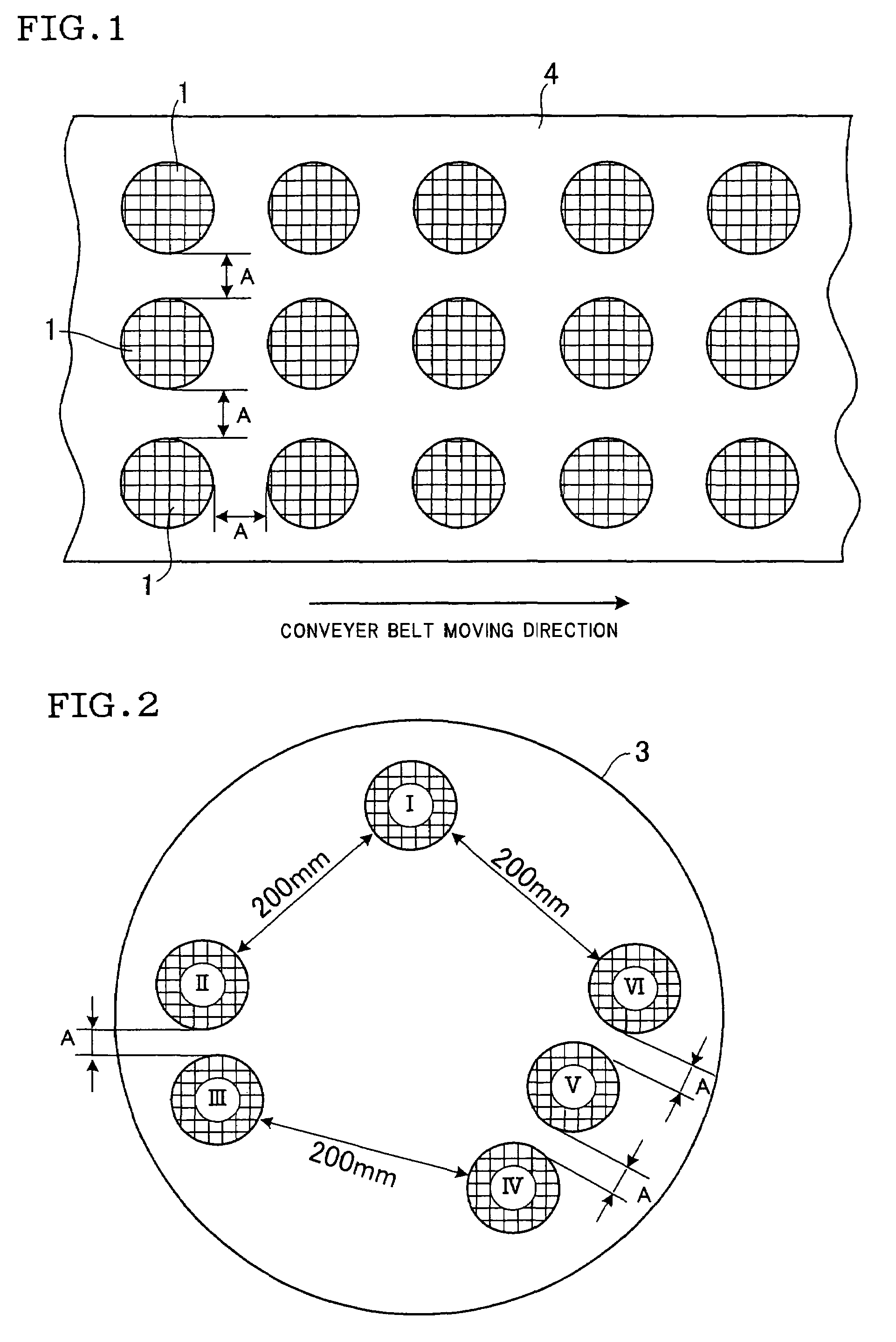Microwave drying method
a drying method and microwave technology, applied in the direction of electric/magnetic/electromagnetic heating, furniture, lighting and heating apparatus, etc., can solve the problem of difficult uniform drying of all objects laid within the same space, and achieve the effect of retaining productivity (mass productivity) at a high level
- Summary
- Abstract
- Description
- Claims
- Application Information
AI Technical Summary
Benefits of technology
Problems solved by technology
Method used
Image
Examples
example 1
[0021]A composition containing powders convertible into cordierite by firing, a binder, and a surfactant were kneaded with an addition of 22 wt % of water and the resultant was extruded to produce a given number of formed honeycomb structures, each having a diameter of 144 mm, a length of 220 mm, a wall thicknesses of 75 μm, and 600 cells / in2 (93 cells / cm2).
[0022]The six honeycomb molded products I–VI were laid as shown in FIG. 2, keeping the predetermined distances, respectively, on a turn table 3 with a diameter of 1.2 m in a batch-type microwave oven having a microwave output of 15 kW to examine the effect of the distance between the honeycomb structures on drying them. Therefore, in the case of the honeycomb structure I, its shortest distance to the nearest adjacent honeycomb structures was set at 200 mm. The shortest distances, that is, the distances A between honeycomb structures II and III, IV and V, V and VI were varied, depending upon the predetermined distances of 0 mm, 60...
example 2
[0026]The formed honeycomb structures with the same size as those in Example 1 were prepared. The formed honeycomb structures were laid as the objects 1 to be dried, shown in FIG. 1, on the conveyer belt 4 in a continuous-type microwave oven with a microwave output of 200 kW, and dried by irradiating a microwave at a wavelength of 120 mm while changing the mutual distance A between the formed honeycomb structures from 0 mm, 60 mm, 90 mm, and 120 mm to determine the rate of water removal at each distance A. As a result, as experienced in the batch-type drier used in Example 1, when the mutual distance A as the shortest distance between at least a pair of the honeycomb structures located adjacently at the nearest distance was 90 mm or more, all the formed honeycomb structures were almost uniformly dried, with almost no difference in the water removal rate among the formed honeycomb structures.
[0027]The method of the present invention is particularly suitably applied to drying formed h...
PUM
| Property | Measurement | Unit |
|---|---|---|
| wavelength | aaaaa | aaaaa |
| distance | aaaaa | aaaaa |
| distance | aaaaa | aaaaa |
Abstract
Description
Claims
Application Information
 Login to View More
Login to View More - R&D
- Intellectual Property
- Life Sciences
- Materials
- Tech Scout
- Unparalleled Data Quality
- Higher Quality Content
- 60% Fewer Hallucinations
Browse by: Latest US Patents, China's latest patents, Technical Efficacy Thesaurus, Application Domain, Technology Topic, Popular Technical Reports.
© 2025 PatSnap. All rights reserved.Legal|Privacy policy|Modern Slavery Act Transparency Statement|Sitemap|About US| Contact US: help@patsnap.com


